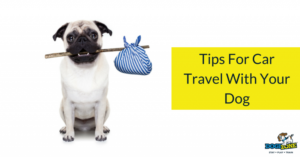Tips For Car Travel With Your Dog
Using a Kennel Can Be the Best Option While You Travel

Most dogs are great travel companions, and they quickly adjust to being in a car. There are some simple ways to help your pet to feel comfortable in a vehicle and to avoid developing bad habits that can be problematic at best or very unsafe at worst. Here are some dog car travel tips for you.
Securing the Dog in the Car
Dogs, like children and adults, need to be secured in a back seat in the vehicle. Accidents and sudden stops can pose a very real health risk to dogs of any size as they are flung around inside the cabin of the vehicle.
Small dogs can be put in a crate and the crate secured with a seat belt. There are even booster types of seats that are ideal for securing the dog in place. These booster seat types designed for dog typically include a harness and a buckle that holds the dog in the booster seat. The booster seat is then secured to a backseat in the vehicle.
Medium to large dogs can be secured in place with a harness type of seatbelt. These need to be correctly sized for the dog and need to fit snuggly but not too tight to the body. If the belts are too loose, the dog will not be secured in place.
Practice with short rides with positives rewards, like a walk in the park, as a reward for getting into the car and into the restraint. Gradually work to longer rides as the dog becomes comfortable.
Leash, Collar, and ID
It is a good idea to get in the habit of leashing the dog before opening the car door, even if the dog is normally well behaved and waits to be told to get out of the vehicle. In new surroundings or after a long ride a dog can become anxious, which can result in the dog jumping out of the car in unfamiliar territory and running loose.
Always keep your dog’s collar on when traveling by car and make sure the identification is clearly marked with your cell phone number for easy contact. Not all people think to have the dog checked for a microchip, so clear information is helpful.
Additionally, travel with a recent photo of your dog on your phone. This makes it easy to contact shelters or to notify people if the dog does get out and runs.
Lots of Stops
It is a good idea to plan to stop every two hours or so for a potty break for the dog. Bring water for the dog with you, never let your dog drink from ditches, streams or lakes as there is always the risk of bacteria or parasites.
This is also time to go for a short walk and allow your dog to burn off some excess energy. This time period can be adjusted based on your dog’s normal activity level and how he or she is responding to the ride.

